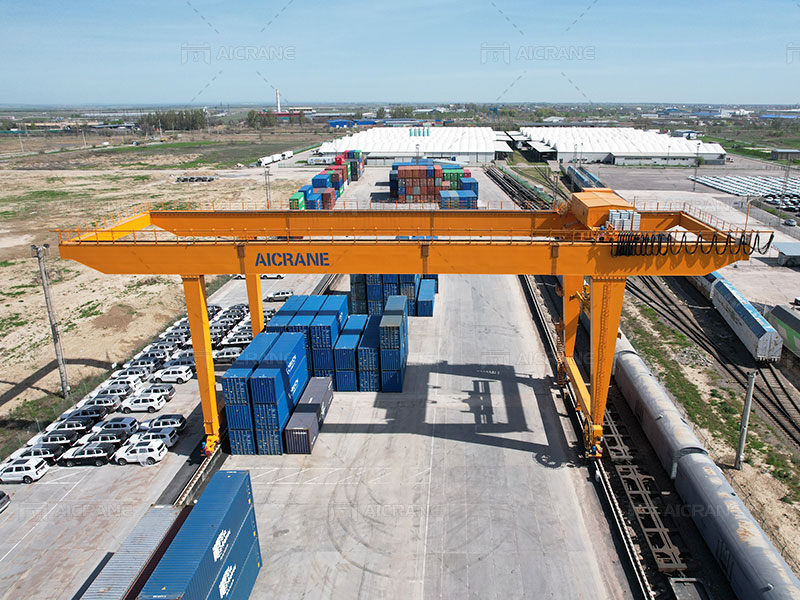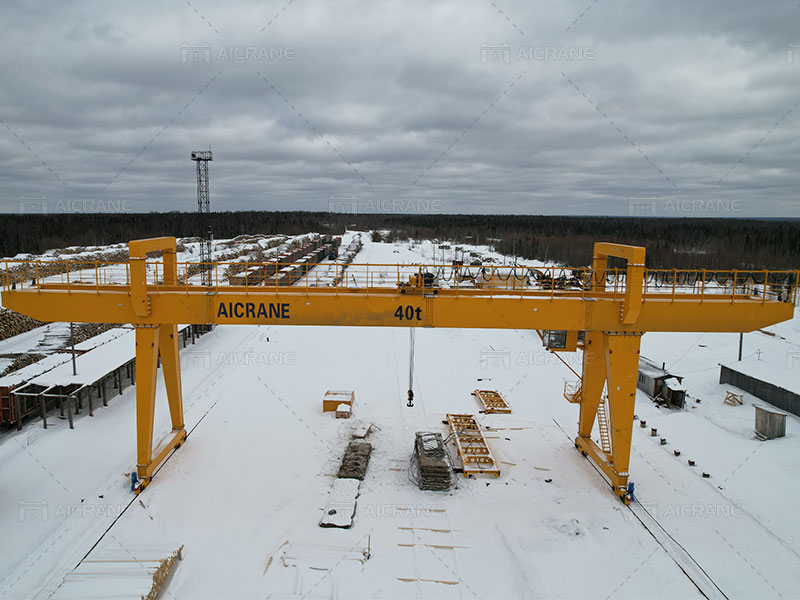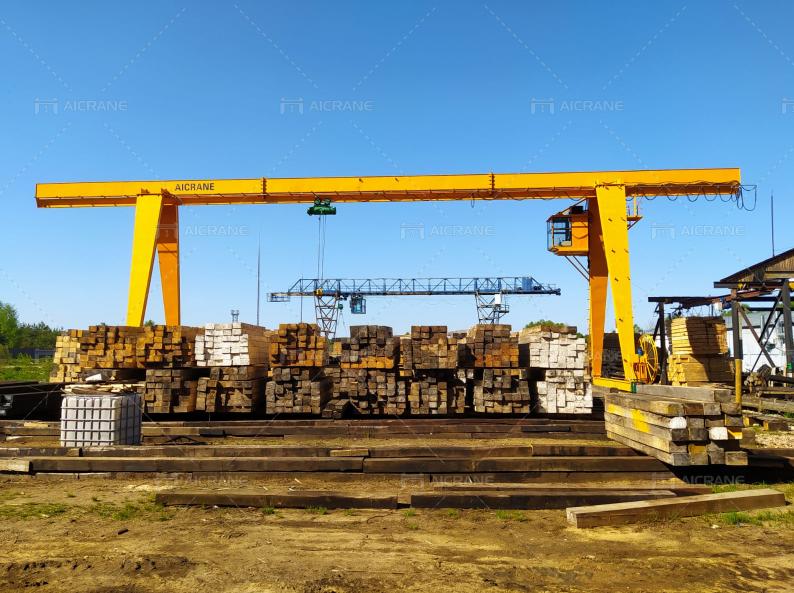When choosing a gantry crane for your business, the decision often boils down to balancing cost and performance. Both single girder and double girder gantry cranes offer different advantages, depending on the specific needs of your operations. But with various factors influencing the overall cost of each option, it’s crucial to understand how to strike the right balance between cost-effectiveness and optimal performance. This article will delve into the differences between single girder and double girder gantry cranes, highlighting their costs, performance capabilities, and determining which type is most cost-effective for your business.

Understanding the Basics of Gantry Cranes
Before we dive into the gantry crane cost and performance analysis, it’s important to understand what differentiates single girder and double girder gantry cranes.
-
Single Girder Gantry Cranes: These cranes are designed with a single main girder that supports the hoist and trolley mechanism. They are typically used for lighter loads and shorter spans, making them ideal for operations that require a smaller lifting capacity, such as smaller warehouses or factories.
-
Double Girder Gantry Cranes: As the name suggests, double girder gantry cranes are equipped with two main girders, which allows for higher load capacities and longer spans. These cranes are generally more robust and offer better stability, making them suitable for heavy-duty applications like shipping yards, steel mills, and construction sites.
1. Initial Purchase Cost
The initial purchase cost is one of the most significant factors when deciding between a single girder and double girder gantry crane.
-
Single Girder Gantry Cranes are typically more affordable than double girder cranes. This is because they have fewer components, simpler design, and lighter construction. As a result, manufacturers can offer them at a lower price point. If your lifting requirements fall within the 5 to 20-ton range and involve relatively short spans, a single girder gantry crane can provide the performance you need at a fraction of the cost of a double girder crane.
-
Double Girder Gantry Cranes, on the other hand, are more expensive due to their added components, stronger framework, and higher load capacity. The cost of the materials used in their construction—such as thicker steel for the girders—drives up the price. If your business requires a lifting capacity exceeding 20 tons or needs longer spans, a double girder gantry crane for sale will be a more reliable solution, but at a significantly higher price.

2. Load Capacity and Performance
Performance, in terms of lifting capacity, is a critical factor in determining which crane offers the best value for your investment.
-
Single Girder Gantry Cranes are typically designed to handle lighter loads. They are ideal for businesses that deal with lighter materials and loads in the range of 5 to 20 tons. These cranes excel in environments where high speed and efficiency are necessary, but extreme lifting capacity is not required. For instance, in warehouses, smaller factories, and smaller construction sites, a single girder gantry crane for sale is often more than sufficient to get the job done effectively.
-
Double Girder Gantry Cranes are designed for heavy-duty operations, offering significantly higher load capacities, typically ranging from 20 tons to 500 tons or more. These cranes are engineered for industrial settings where high-performance lifting is crucial, such as in heavy manufacturing, shipyards, and steel mills. If your business needs to handle large equipment, materials, or heavy construction projects, a double girder gantry crane will provide the required performance. However, businesses that don’t need the heavy-duty capabilities of a double girder crane may find that the additional cost does not translate into value.
3. Operational Costs
While the initial cost is important, businesses also need to consider the long-term operational costs associated with running a gantry crane. These costs include energy consumption, maintenance, and downtime.
-
Single Girder Gantry Cranes tend to have lower operational costs. They are generally lighter, require less power to operate, and have fewer components that need regular maintenance. With less complexity, there are fewer potential points of failure, which can minimize repair and downtime costs. The simplicity of the design also means that maintenance and repair work is usually less expensive.
-
Double Girder Gantry Cranes may have higher operational costs due to their heavier construction and more complex systems. They typically require more power to operate, especially if they are handling very heavy loads. Moreover, their additional components, such as the second girder and more advanced hoisting systems, can result in higher maintenance and repair expenses over time. On the plus side, their more robust construction can offer a longer lifespan and fewer issues when used for high-demand applications, which may offset some of the higher operational costs in the long run.
4. Space and Structural Requirements
Another important consideration when comparing the overhead gantry crane for sale is the space and infrastructure needed to support their operation.
-
Single Girder Gantry Cranes require less space and structural support. Their lighter weight and smaller design mean that they can be installed in smaller buildings or on structures that may not need to be reinforced. This reduces the overall construction and installation costs.

-
Double Girder Gantry Cranes require more space and a stronger structural foundation. Due to their size and weight, they often require reinforced buildings or larger installation areas. This can increase the upfront costs of installation, especially in terms of space preparation and reinforcement. If you are considering a double girder crane, be prepared for these added structural and installation costs.
5. Customization and Versatility
Both single and double girder gantry cranes can be customized for specific operational needs, but there are differences in their versatility.
-
Single Girder Gantry Cranes are generally simpler to customize. They can be adapted to different lifting heights, spans, and control systems. However, their customization options are somewhat limited by their smaller capacity.
-
Double Girder Gantry Cranes, being more complex, offer greater customization options. They can be fitted with more advanced systems for precise control, larger spans, and greater lifting capacities. However, these customizations come with additional costs, both in terms of the crane price and potential maintenance.
6. Return on Investment (ROI)
When it comes to ROI, the key is to evaluate whether the higher initial investment in a double girder gantry crane justifies the added performance and long-term benefits.
-
For businesses that require high lifting capacities, large spans, and heavy-duty performance, a double girder gantry crane is likely the better option in the long run, despite the higher initial cost. The performance gains in terms of reliability, strength, and versatility will provide a solid return on investment, especially for industries where downtime is costly.
-
For businesses with lighter loads and lower demands on lifting capacity, a single girder gantry crane offers excellent value. The lower upfront cost, lower operating costs, and sufficient performance for smaller projects or warehouses make it a highly cost-effective option, providing a solid ROI without the need for significant capital expenditure.
Conclusion
The decision between a single girder and double girder gantry crane ultimately depends on your business’s specific needs, load requirements, and budget. A single girder gantry crane offers excellent cost-efficiency for businesses with lighter loads and simpler lifting needs, while a double girder gantry crane is more suited for heavy-duty operations requiring high lifting capacities and larger spans.
In terms of cost vs performance, the most cost-effective choice is not always the one with the lowest initial price tag but the one that provides the most value over its operational lifespan. Consider your business’s long-term goals, potential for growth, and specific lifting needs when making your decision.